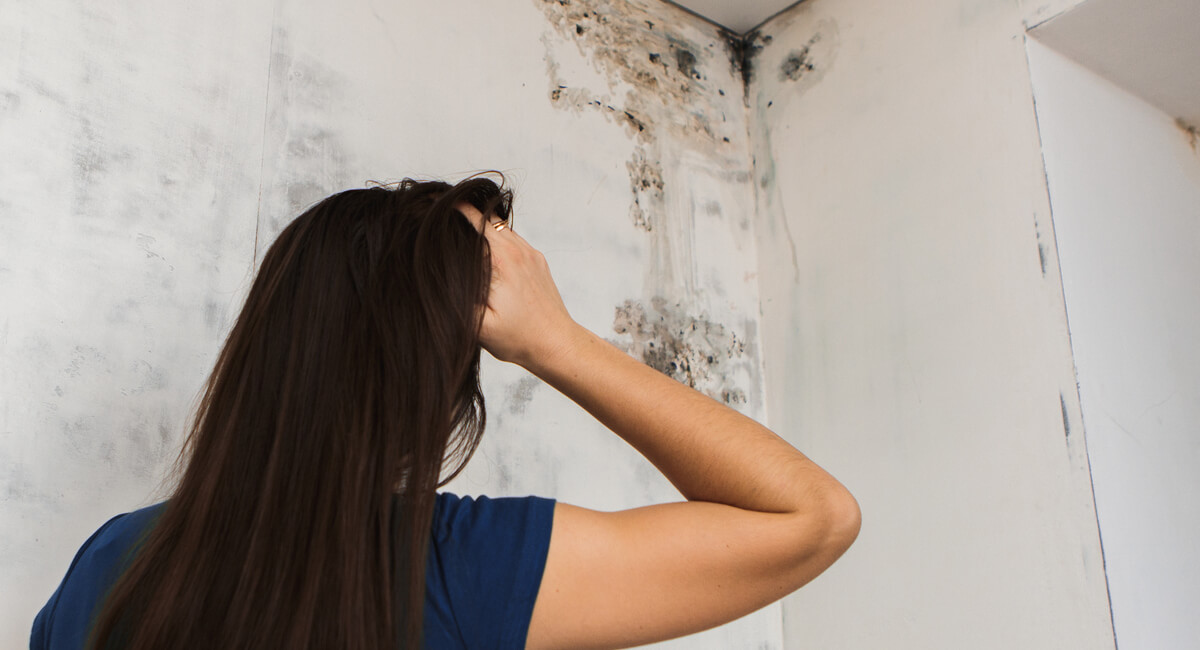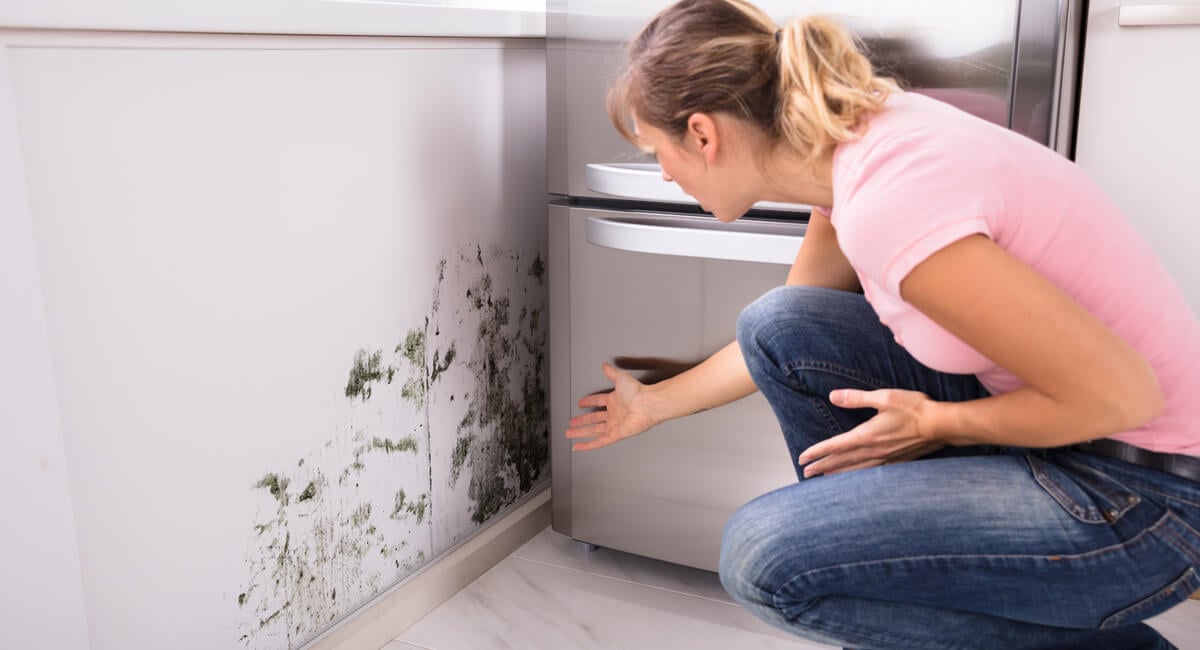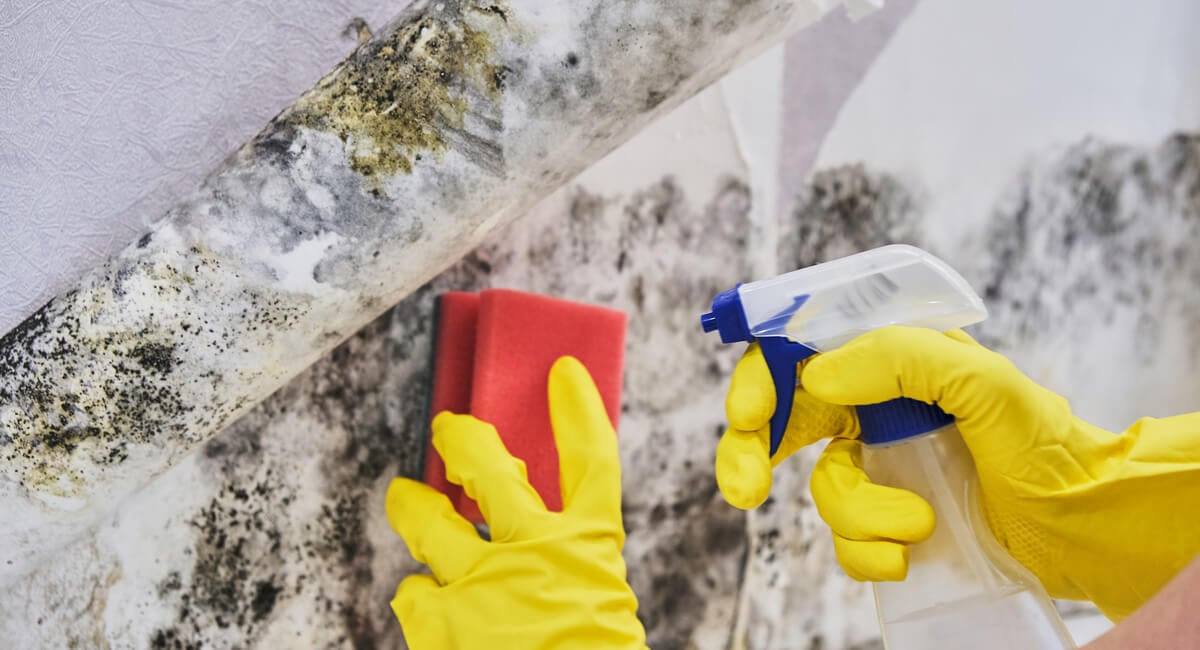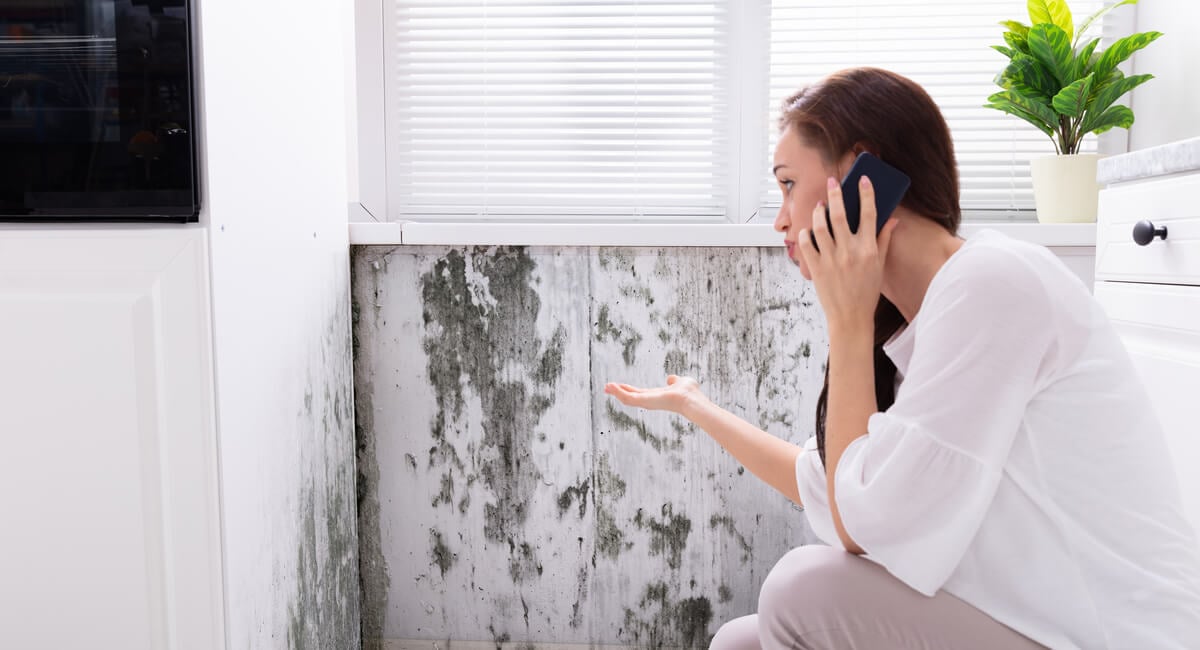Mold is a terrible problem to encounter for a homeowner. It can present a danger to your health, it’s difficult to get rid of, and it’s often a sign of even more serious problems with the property. Discovering a mold problem while in the process of buying or selling a home can be even worse. Mold always needs to be taken seriously by both buyers and sellers. If you’re a homeowner or prospective home buyer, you should understand why mold is so dangerous, how to get rid of it for good, and how it can impact a real estate transaction.

Risk Factors For Mold Growth
Mold tends to grow in environments with high levels of moisture. One of the most common causes of significant mold growth in homes is water intrusion. Leaks and flooding can cause water to accumulate on the ceiling, under the floors, or behind the walls. High humidity can contribute to mold growth, too. If your kitchen or bathroom have poor ventilation, the excess moisture could result in mold in these rooms.
Aging appliances and systems in your home may also contribute to mold growth. If you notice mold in the cupboards under your sink, a leaking pipe is probably the culprit. It’s also very common to see mold around an air conditioning unit due to leaks or condensation build-up.

Dangers of Mold Exposure
Mold affects everyone differently. Some people are highly sensitive to mold, and others hardly notice the effects. Your reaction can also vary depending on the severity of the problem. For instance, a small amount of mold growing in the corner of the bathroom due to poor ventilation will not cause as harmful of a reaction as extensive mold growth behind the drywall.
Mild symptoms of mold exposure include congestion, coughing, and itchy eyes. In more severe cases, you might experience wheezing, shortness of breath, or brain fog. Children, seniors, people with asthma or allergies, and immune-compromised individuals are more likely to experience severe symptoms.

Getting Rid of Mold
The correct procedure for getting rid of mold depends on the cause and the extent of the problem. According to the EPA, if the mold covers less than 10 square feet, you can probably clean it up yourself. Scrub the affected area with soapy water and detergent until all the mold is gone. To reduce your exposure to the mold, wear a mask, goggles, and gloves while cleaning. If you find mold in carpeting, ceiling tiles, or other absorbent materials, you may have to dispose of them. Mold penetrates these materials deeply and can be virtually impossible to remove.
If the mold covers more than 10 square feet, you should hire a mold remediation professional. Trying to clean and remove this much mold without the proper protection can be dangerous. A mold remediation expert will safely and thoroughly remove the mold, reducing the chances of it growing back. If your home has extensive mold, it’s also important to identify the source. Your mold remediation professional will inspect your home for leaks and tell you what needs to be done to prevent the issue from recurring.
Once you’ve corrected the mold issue, you have to put preventative measures in place to keep your home free from mold. If improper ventilation is the problem, you could install new vents or open your windows more frequently. If the mold grew due to leaks in your roof, plumbing, or HVAC unit, you must repair or replace the system at fault. This may be a costly project, but the mold will continue to return until you eliminate the cause.

Buying a Home With Mold
If you’re planning on buying a home, it’s important to be aware of issues that may arise with mold. The seller is responsible for disclosing mold growth in the home, but you should never rely on their word alone. Unfortunately, many buyers have closed on homes only to later discover mold issues that cost thousands of dollars to remediate.
Mold is one of many reasons you should have a property inspected before buying it. If your inspector discovers mold, you and the seller should re-negotiate the deal. You could request that the seller fix the mold problem before you close on the home, or you could negotiate a lower selling price. Mold remediation can be costly, so it can have a significant impact on the terms of your deal. You should also keep in mind that extensive mold growth is almost always a sign of a larger problem. The home might need a new roof, plumbing repairs, or other significant work.
In some cases, it’s best to walk away from a deal when you discover mold. If the seller was aware of the mold and didn’t disclose it before the inspection, they may be covering up other issues as well. Extensive mold growth could be a sign that the seller hasn’t taken good care of the home overall, which doesn’t bode well for you as the buyer. Additionally, if the seller doesn’t have the funds to pay for mold remediation, you might save yourself time and stress by walking away from the sale.

Selling A Home With Mold
If you’ve discovered mold in the home you’re trying to sell, you might be wondering about your best course of action. You aren’t prohibited by law to sell a home with mold. However, depending on where you live, you may be legally required to disclose the mold issue to prospective buyers. All states have different laws on disclosing defects during real estate transactions, so you should consult with your real estate agent on your specific circumstances.
In general, not disclosing significant mold growth to a buyer is a very unwise decision. The home inspection will almost certainly reveal the problem, and you and the buyer will then have to re-negotiate the sale. If the buyer discovers the mold after closing, they might be able to take legal action against you.
If possible, you should pay for mold remediation before listing your home. Mold remediation can be expensive, but taking care of the problem before putting your home on the market can save you a great deal of stress as you navigate the sale. Furthermore, removing the mold as soon as possible ensures that you stay safe and healthy while you’re still living in the home.
If you do choose to put your home on the market in its current state, you and your real estate agent should be prepared to negotiate. The buyer will either ask you to correct the issue before you close, or they’ll offer a lower price for the home.
Another option is to sell your home “as-is,” which means the buyer purchases the home in its current state regardless of the defects. You’re still obligated to disclose the mold issue when you sell your home as-is, but buyers who pursue as-is sales typically know that the home won’t be in perfect condition. You’ll probably receive lower offers for an as-is sale. However, it can be a good option if you’re trying to sell your home as quickly as possible.
Even a seemingly small mold problem needs to be addressed immediately. If you’re buying a home with mold, you should factor the cost of mold remediation into the deal. If you’re selling a house with mold, you must understand your responsibility to disclose the problem and be ready to fund the remediation at the buyer’s request.



